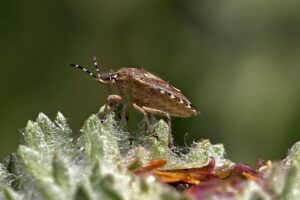5 Common Bug Issues with Houseplants

Houseplants are a great way to bring a little bit of nature into our homes, but they can also be a bit finicky at times. If you’re having trouble keeping your houseplants healthy, here are a few tips for debugging common issues.
Overwatering: One of the most common problems with houseplants is overwatering. This can cause the roots to rot, which can lead to yellowing leaves and wilting. To avoid overwatering, make sure you’re only watering your plants when the soil is dry to the touch.
Underwatering: On the other hand, if you’re not watering your plants enough, they may become dry and brittle. This can be caused by a lack of humidity, or by using a pot that’s too large for the plant. To fix this issue, make sure you’re watering your plants regularly and consider using a humidifier.
Pest infestations: Houseplants can also be affected by pests such as spider mites, mealybugs, and scale insects. These pests can cause damage to the leaves and can be difficult to get rid of. To prevent pests, make sure you’re keeping your plants clean and free of debris. If you do notice pests, try using the following methods to get rid of them:
Manual removal: The first step in getting rid of pests is to manually remove as many of them as possible. This can be done by gently rubbing the leaves with a cotton swab dipped in rubbing alcohol, or by using a small brush to remove them.
Neem oil: Neem oil is a natural pesticide that can be used to get rid of pests on houseplants. It’s made from the seeds of the neem tree and is safe for both plants and humans. Mix a small amount of neem oil with water and spray it on the affected plants.
Insecticidal soap: Insecticidal soap is another effective way to get rid of pests on houseplants. It’s a mild solution that can be used to kill pests on contact. Mix a small amount of insecticidal soap with water and spray it on the affected plants.
Introduce beneficial insects: Beneficial insects such as ladybugs and praying mantis can be used to control pests on houseplants. These insects eat the pests and help to keep the population under control.
Consider systemic insecticides: Some pests, like mealybugs, spider mites, and thrips, could be hard to get rid of using the above methods, in these cases a systemic insecticide can be very effective. These types of insecticides are absorbed by the plant and will kill the bugs when they feed on the plant.
It’s important to note that before using any chemical solutions, always read the label and follow the instructions carefully. Also, try to use the least toxic options first and consider the environment and other living organisms that could be affected by the use of pesticides.
Disease: Some houseplants are also susceptible to diseases such as powdery mildew, leaf spot, and root rot. These diseases can be caused by a variety of factors, such as poor drainage, poor air circulation, or pests. To prevent diseases, make sure you’re providing your plants with the right conditions and keep an eye out for any signs of trouble.
Lack of light: Without enough light, houseplants can become leggy and weak. This is often caused by placing a plant in a spot that doesn’t get enough sunlight. To fix this issue, make sure you’re placing your plants in a spot that gets plenty of bright, indirect light.